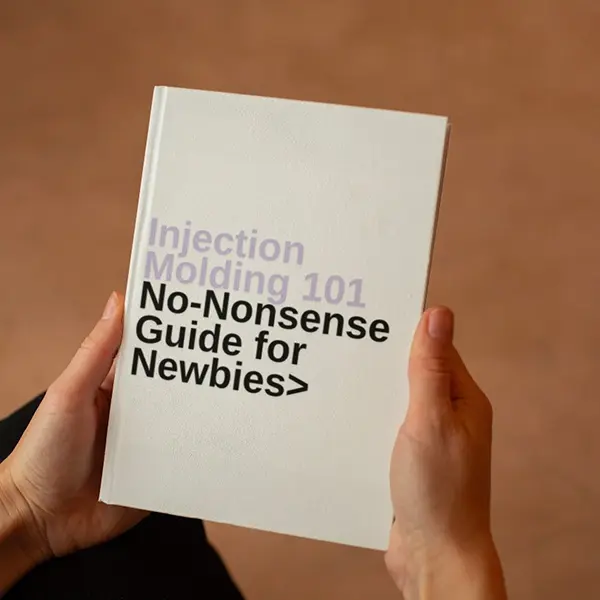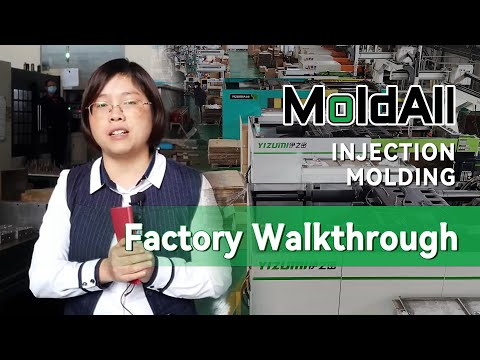
The ejection system is a critical component in injection molding1, responsible for removing the solidified part from the mold cavity2. Choosing the right ejection system ensures efficient production, minimizes part damage, and extends the mold’s lifespan. This guide provides a detailed exploration of ejection systems, covering definitions, classifications, applications, technical insights, practical tools, and related technologies to help you make an informed decision. The ejection system removes molded parts from the mold cavity using mechanisms like pins, blades, or air, ensuring clean release without damage to the part or mold.
Understanding the nuances of ejection systems and their applications is essential for optimizing your molding process3. Explore further to learn how different systems suit various part geometries, materials, and production needs.
The ejection system is only necessary for complex parts.False
Even simple parts require an ejection system to ensure clean removal from the mold, though the type of system may vary based on part complexity.
Choosing the right ejection system can reduce production costs.True
A well-selected ejection system minimizes part defects and mold wear, leading to fewer rejects and lower maintenance costs.
- 1. What Are the Common Types of Ejection Systems?
- 2. What Are the Steps in the Ejection Process?
- 3. What Are the Key Factors in Choosing an Ejection System?
- 4. What Are the Applications of Different Ejection Systems?
- 5. What Are the Differences Between Mechanical and Non-Mechanical Ejection Systems?
- 6. How Do You Design an Effective Ejection System?
- 7. What Are the Practical Tools for Selecting an Ejection System?
- 8. What Are the Related Technologies to Ejection Systems?
- 9. Conclusion
What Are the Common Types of Ejection Systems?
Ejection systems are vital in injection molding, ensuring parts are removed efficiently and without damage. The choice of system depends on part geometry, material, and production requirements.
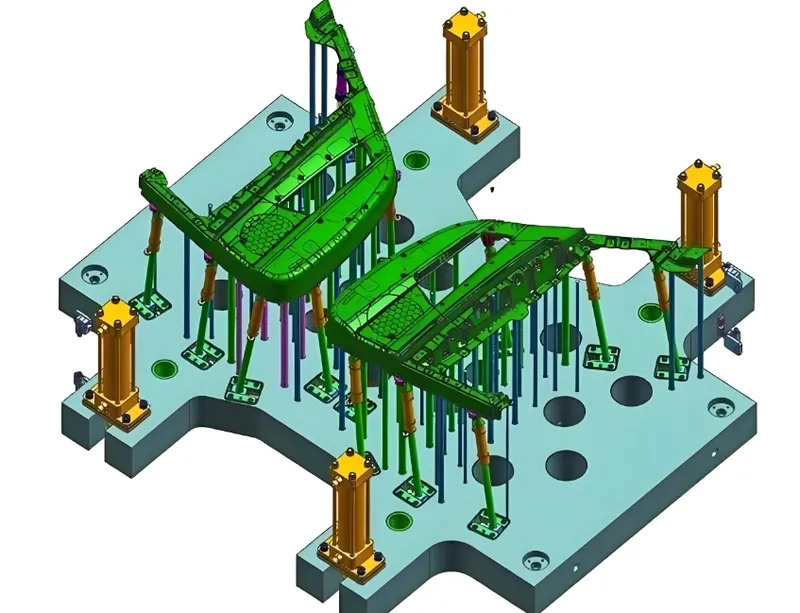
Common ejection systems4 include ejector pins5, blades, sleeves, strippers, lifters, air ejection6, and hydraulic systems, each suited to specific part designs and materials.
| Ejection System | Recommended For | Notes |
|---|---|---|
| Ejector Pins | Simple, flat parts | Cost-effective, may leave marks |
| Blades | Thin sections, ribs | Prone to wear, can cause flash |
| Sleeves | Circular features | Even force, faster wear |
| Strippers | Complex geometries | Clean ejection, high maintenance |
| Air Ejection | Delicate, thin-walled parts | No contact, requires air setup |
| Hydraulic Ejection | Large, heavy parts | Powerful, complex setup |
Ejector Pins
Ejector pins are the most common and cost-effective ejection system. They are simple to implement and maintain but may leave visible marks on the part, making them suitable for non-aesthetic surfaces Natech Plastics.
Blades
Blades are used for thin sections or ribs where pins might not provide sufficient support. However, they wear faster and can cause flash if not maintained properly FOW Mould.
Sleeves
Sleeves are ideal for circular features like bosses or holes, providing even force distribution. They are commonly used in precision components but wear faster due to multiple contact surfaces Upmold Limited.
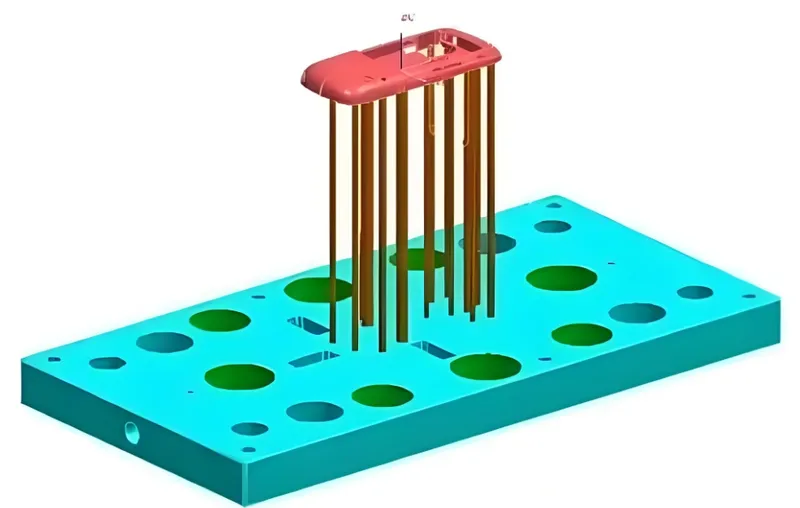
Strippers
Strippers, such as rings or plates, eject parts from the perimeter, making them perfect for complex shapes. They are widely used in automotive and medical device molds but require regular maintenance Natech Plastics.
Air Ejection
Air ejection uses pneumatic pressure for non-contact removal, ideal for delicate or thin-walled parts like medical containers. It prevents damage but requires an air supply setup FOW Mould.
Hydraulic Ejection
Hydraulic systems provide powerful ejection for large or heavy parts, such as industrial components. They are complex and costly but necessary for challenging applications Upmold Limited.
Ejector pins are suitable for all types of parts.False
While versatile, ejector pins may not be ideal for delicate or complex parts where marks or uneven ejection could cause issues.
Air ejection is the most cost-effective system.False
Air ejection requires additional setup and maintenance, making it more expensive than simple pin systems.
What Are the Steps in the Ejection Process?
The ejection process is a crucial stage in injection molding, ensuring the part is removed cleanly and efficiently from the mold.
The ejection process involves mold opening, ejection activation, part removal, and ejector retraction, with key parameters like ejection distance, speed, and force.
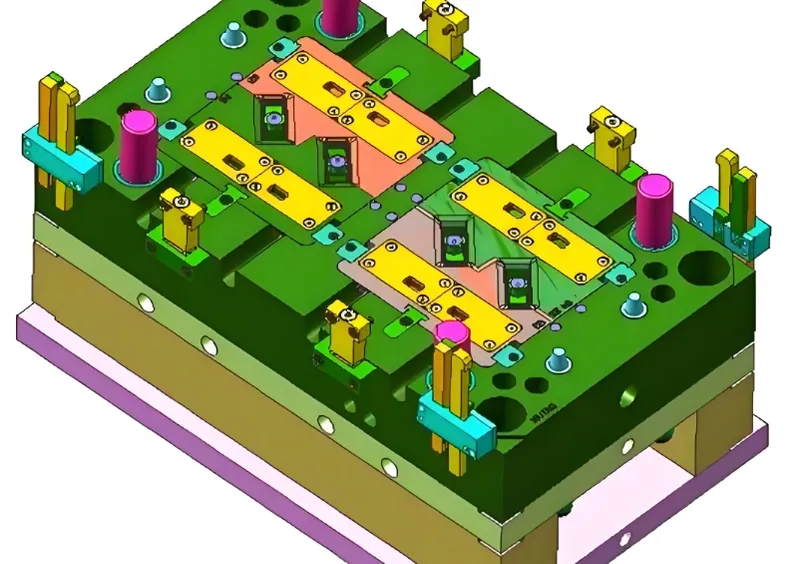
Mold Opening
After the part cools and solidifies, the mold opens, separating the cavity and core.
Ejection Activation
The ejection system (e.g., pins, plates) is activated, moving forward via mechanical, pneumatic, or hydraulic force to push the part out.
Part Removal
The part is ejected from the cavity. Proper ejection prevents damage to the part or mold.
Ejector Retraction
The ejection system retracts, and the mold closes for the next cycle.
Key Parameters:
-
Ejection Distance: Typically 5-10mm or 2/3 of the part’s length with draft.
-
Ejection Speed: Controlled to avoid part damage.
-
Draft Angles: 1-2° per side for smooth release.
-
Ejection Force: Balanced to prevent uneven ejection Upmold Limited.
Ejection distance is the same for all parts.False
Ejection distance varies based on part size, geometry, and draft angles.
Proper draft angles are essential for effective ejection.True
Draft angles facilitate smooth part release, reducing the risk of sticking or damage.
What Are the Key Factors in Choosing an Ejection System?
Selecting the right ejection system depends on several factors that influence part quality, mold longevity, and production efficiency.
Key factors include part geometry7, material properties, mold complexity, and production volume8, which determine the most suitable ejection mechanism.
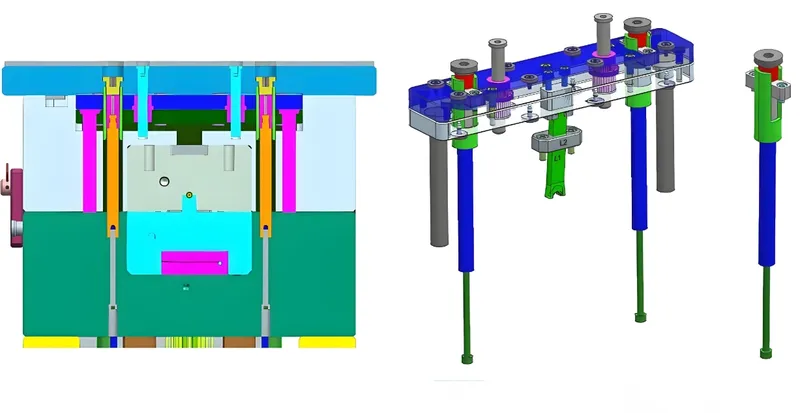
Part Geometry
Simple parts with flat surfaces can use basic systems like pins, while complex shapes with undercuts require lifters or strippers.
Material Properties
Materials with high shrinkage (e.g., polypropylene) may need aggressive ejection, while brittle materials (e.g., ABS) require gentle systems like air ejection.
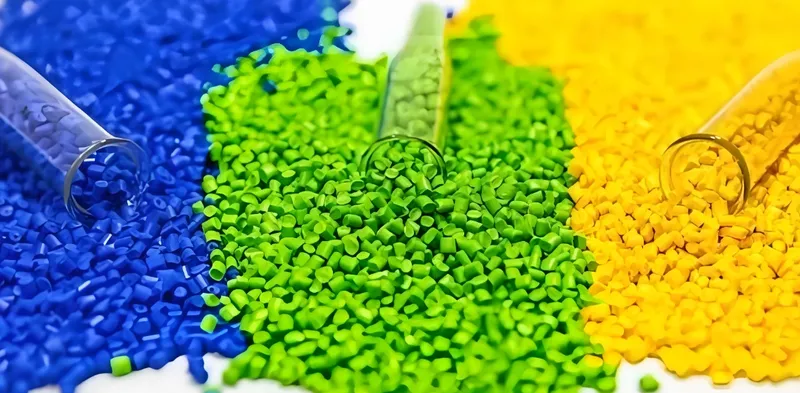
Mold Complexity
Multi-cavity molds or those with intricate designs need balanced ejection systems to prevent uneven force distribution.
Production Volume
High-volume production may favor durable systems like hydraulic ejection, while low-volume runs can use simpler, cost-effective options.
Part geometry is the only factor in choosing an ejection system.False
While important, material properties, mold complexity, and production volume also play crucial roles.
High-shrinkage materials require more aggressive ejection systems.True
Materials like polypropylene tend to stick, necessitating stronger ejection mechanisms.
What Are the Applications of Different Ejection Systems?
Ejection systems are tailored to specific industries and part types, ensuring optimal performance and part quality.
Ejection systems are used in automotive[^91], consumer goods, medical devices9, and industrial applications, each requiring specific mechanisms for efficient part removal.
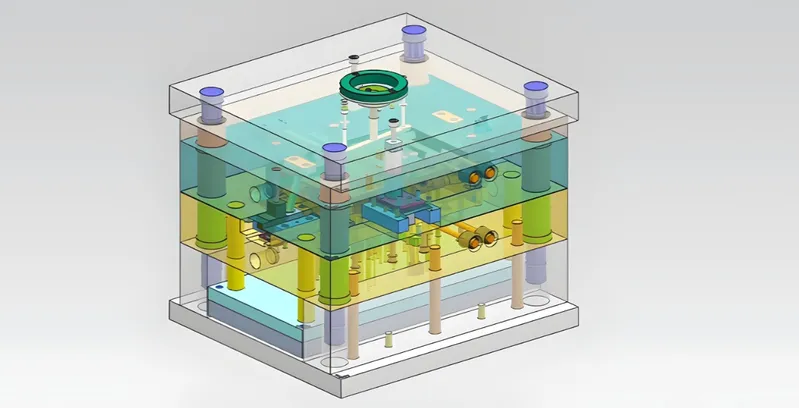
Automotive Industry
Complex geometries often require strippers or lifters for precision ejection, ensuring parts like dashboards or trim pieces are removed without damage.
Consumer Goods
Simple parts like containers or lids typically use ejector pins, while thin-walled items benefit from air ejection to prevent deformation.
Medical Devices
Delicate parts, such as syringes or tubing, favor air ejection or gentle pin systems to maintain integrity and avoid contamination.
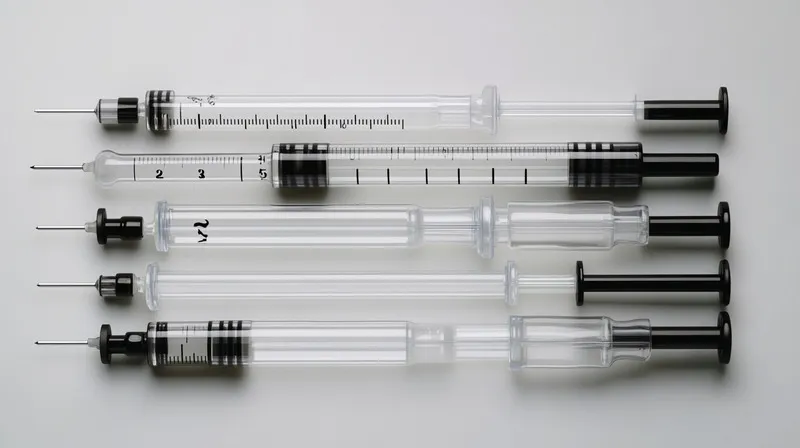
Industrial Components
Large or heavy parts, like machinery housings, often require hydraulic ejection for sufficient force and control.
Air ejection is exclusively used in the medical industry.False
While common in medical applications, air ejection is also used in other industries for delicate or thin-walled parts.
Hydraulic ejection is necessary for large industrial parts.True
Hydraulic systems provide the power needed to eject large, heavy parts without damage.
What Are the Differences Between Mechanical and Non-Mechanical Ejection Systems?
Ejection systems can be categorized into mechanical and non-mechanical types, each with distinct advantages and applications.
Mechanical systems (pins, blades) use physical force, while non-mechanical systems (air, hydraulic) use pressure or fluid power, offering different benefits based on part needs.
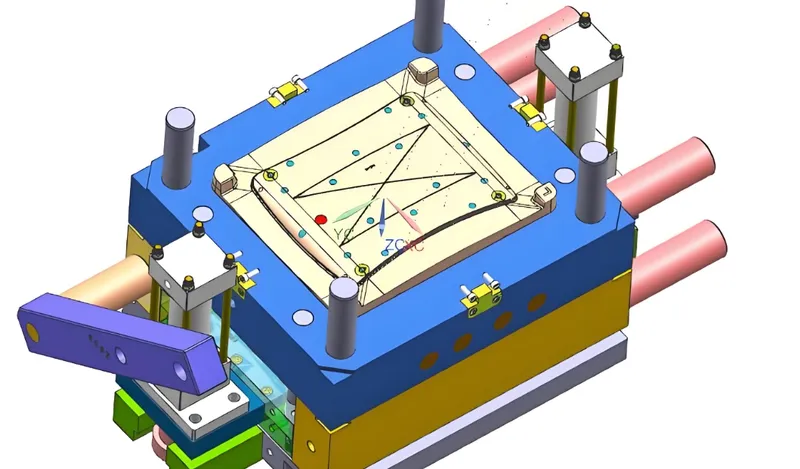
Mechanical Ejection
-
Examples: Pins, blades, sleeves, strippers.
-
Advantages: Simple, cost-effective, easy to maintain.
-
Disadvantages: Can leave marks, may not suit delicate parts.
Non-Mechanical Ejection
-
Examples: Air ejection, hydraulic ejection.
-
Advantages: Gentle on parts, suitable for complex or large components.
-
Disadvantages: Higher cost, more complex setup.
Mechanical ejection systems are always preferable due to their simplicity.False
While simple, mechanical systems may not be suitable for all parts, especially delicate or complex ones.
Non-mechanical systems are more versatile for various part types.True
Systems like air or hydraulic ejection can handle a wider range of part geometries and materials.
How Do You Design an Effective Ejection System?
Designing an effective ejection system requires careful consideration of part and mold characteristics to ensure smooth operation and part quality.
An effective ejection system balances force distribution, minimizes part damage, and accommodates material properties, with key design elements like draft angles and ejector placement.
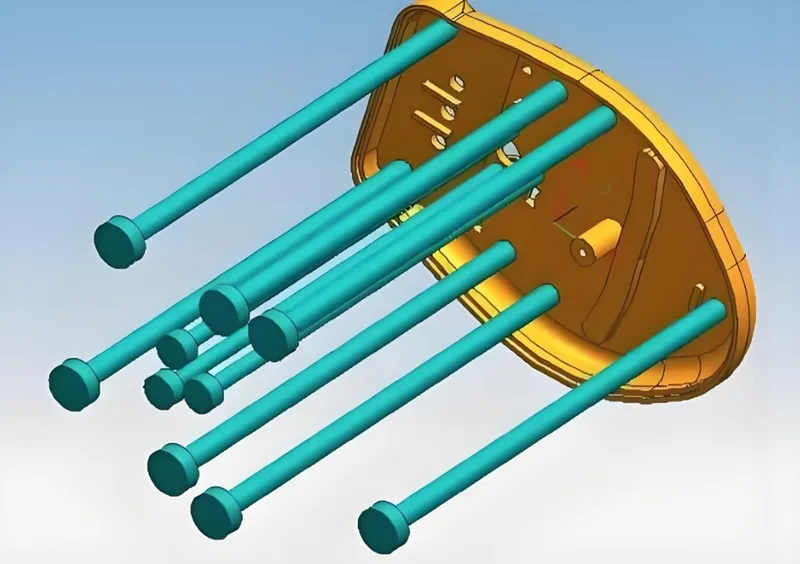
Draft Angles
Incorporate 1-2° draft angles per side to facilitate smooth part release.
Ejector Placement
Position ejectors on non-visible surfaces or areas with sufficient wall thickness to avoid marks or deformation.
Balanced Ejection
Ensure even force distribution to prevent tilting or uneven ejection, especially in multi-cavity molds.
Material Considerations
Account for material shrinkage and adhesion properties to select the appropriate ejection force and mechanism.
Draft angles are optional in mold design.False
Draft angles are essential for smooth ejection and to prevent part sticking or damage.
Ejector placement affects part aesthetics and functionality.True
Proper placement minimizes visible marks and ensures the part's structural integrity.
What Are the Practical Tools for Selecting an Ejection System?
Practical tools like checklists and decision trees can guide the selection process, ensuring all critical factors are considered.
Use a design checklist and decision tree to evaluate part geometry, material, and production needs for choosing the right ejection system.
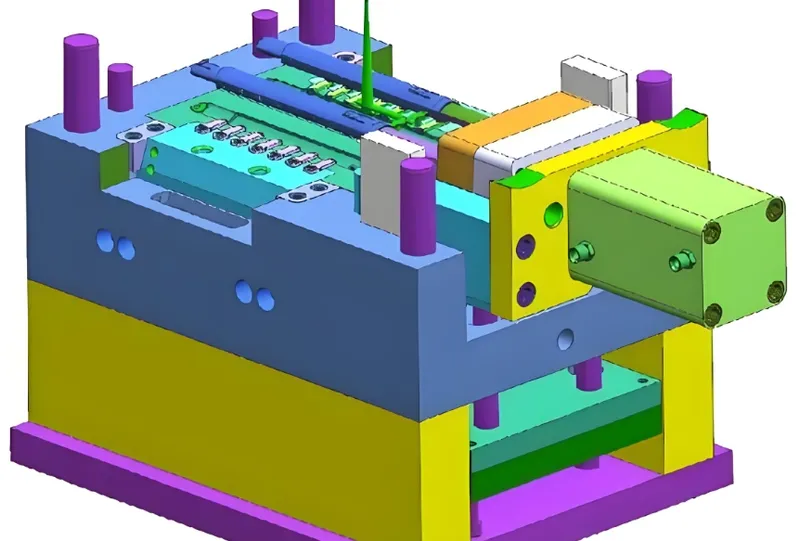
Design Checklist
-
Ensure adequate draft angles (1-2° per side).
-
Consider part geometry and potential sticking points.
-
Optimize ejector pin sizes and locations to minimize marks.
-
Use lifters or collapsible cores for undercuts.
-
Balance the ejection system to prevent uneven force.
-
Account for material shrinkage and adhesion properties.
Decision Tree
-
Is the part simple with flat surfaces?
- Yes → Use ejector pins.
- No → Proceed.
-
Does the part have undercuts or complex geometries?
- Yes → Use lifters or strippers.
- No → Proceed.
-
Is the part large or heavy?
- Yes → Consider hydraulic ejection.
- No → Proceed.
-
Is the part delicate or prone to sticking?
- Yes → Use air ejection or textured surfaces.
- No → Use standard pins or blades.
A decision tree simplifies the selection process for ejection systems.True
It provides a structured approach to evaluate key factors and choose the most suitable system.
Checklists are unnecessary for experienced mold designers.False
Even experienced designers benefit from checklists to ensure no critical details are overlooked.
Ejection systems are part of a broader network of technologies that influence mold design and part quality.
Related technologies include mold design, material selection, cooling systems, venting, and surface treatments, all impacting ejection efficiency.
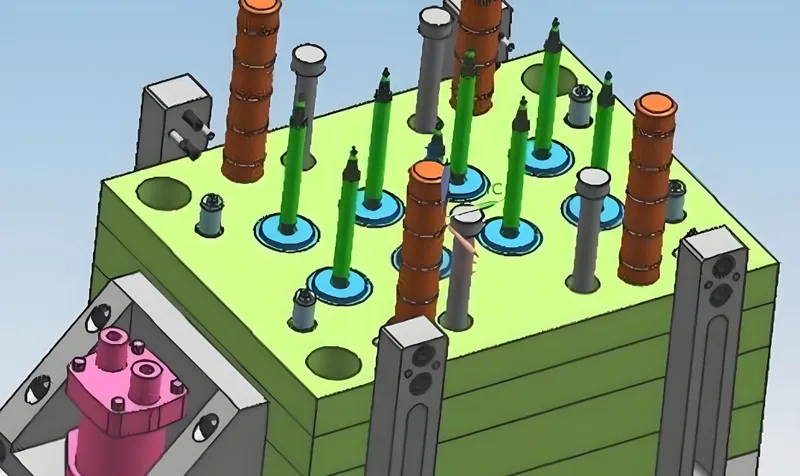
Upstream Technologies
-
Mold Design: Proper cavity and core design ensure compatibility with the ejection system.
-
Material Selection: Choosing materials with suitable shrinkage and adhesion properties.
-
Machine Selection: Must support the ejection system’s requirements.
Downstream Technologies
-
Part Finishing: Trimming or polishing to remove ejection marks.
-
Assembly: Ensuring ejected parts are ready for assembly without defects.
-
Quality Control: Inspecting for ejection-related issues like marks or deformation.
Related Technologies
-
Cooling Systems: Proper cooling reduces sticking and warping.
-
Venting: Prevents burn marks and facilitates smooth ejection.
-
Surface Treatments: Texturing or coatings reduce adhesion Natech Plastics.
Cooling systems have no impact on ejection.False
Effective cooling reduces part shrinkage and sticking, aiding ejection.
Surface treatments can enhance ejection efficiency.True
Textured or coated surfaces reduce adhesion, making part release easier.
Conclusion
Selecting the right ejection system for your mold is crucial for optimizing part quality, mold longevity, and production efficiency. By understanding the types, applications, and technical aspects of ejection systems, and using practical tools like checklists and decision trees, you can make an informed choice tailored to your specific needs. Always prototype and test your design to ensure the system performs as expected.
-
Discover best practices in injection molding to enhance efficiency and product quality. This resource will provide valuable guidance. ↩
-
Learn about the function of mold cavities in injection molding to improve your understanding of the process and its efficiency. ↩
-
Explore best practices to optimize your molding process for better efficiency and quality in production. ↩
-
Understanding ejection systems is crucial for optimizing production efficiency and part quality in injection molding. ↩
-
Learn about ejector pins to ensure effective and damage-free removal of simple parts in your production process. ↩
-
Explore the advantages of air ejection for delicate parts, ensuring no contact damage during the ejection process. ↩
-
Exploring the impact of part geometry on ejection mechanisms can lead to better design decisions and improved product outcomes. ↩
-
Learning about the relationship between production volume and ejection systems can optimize manufacturing processes and cost efficiency. ↩
-
Learn about the specialized ejection methods that maintain the integrity of delicate medical components, crucial for safety and effectiveness. ↩


